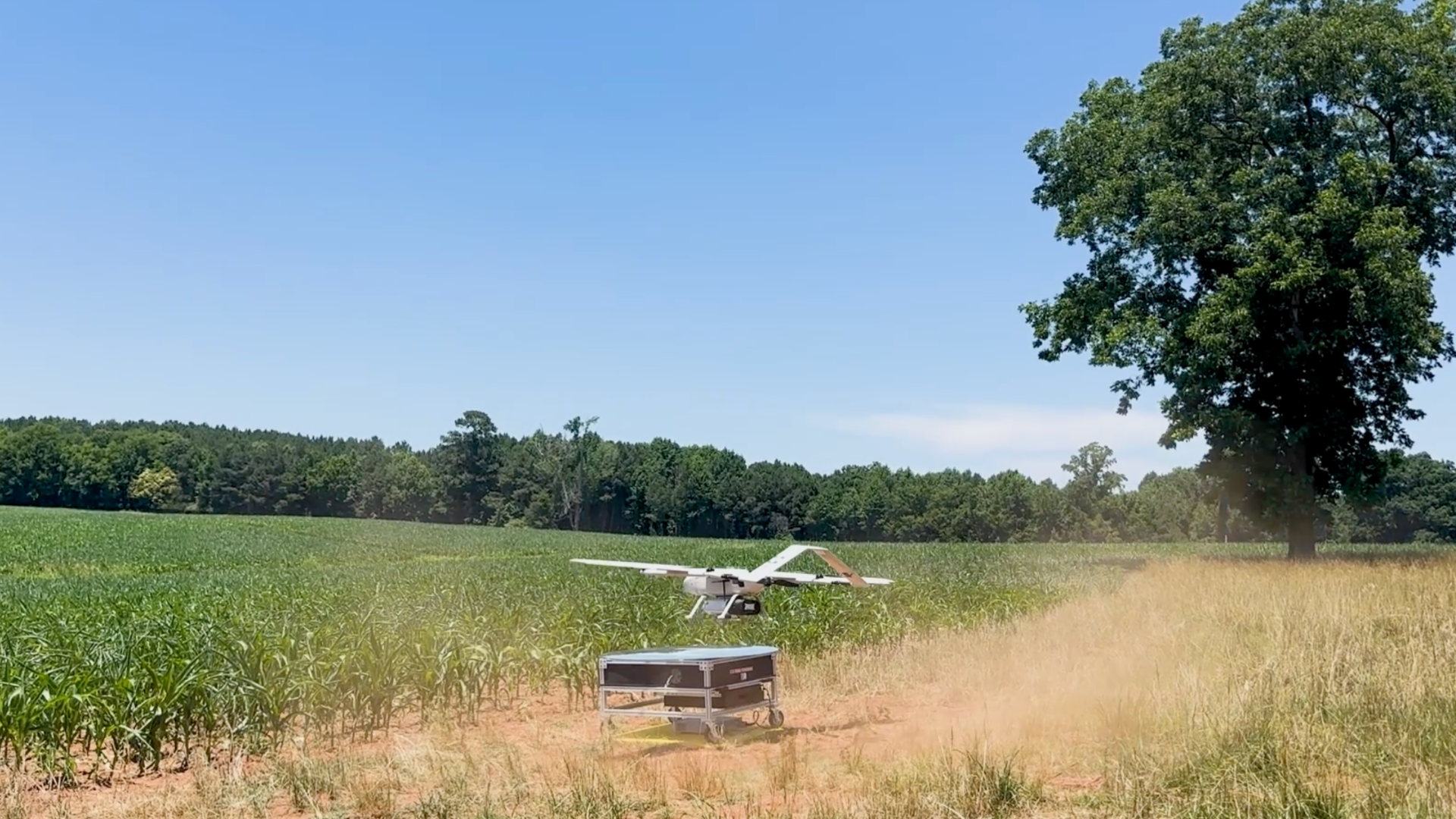
Powering Medical Drones: How NC State, Utah State and Navajo Tech Are Shaping Autonomous Drone Technology
A NIST-funded project brings together NC State, Utah State and Navajo Tech to develop cutting-edge drone technology for pandemic preparedness. The project focuses on autonomous drones capable of delivering medical supplies across long distances, equipped with wireless charging and thermal regulation systems.
September 27, 2024 ![]() Tolar Ray
Tolar Ray
Researchers from NC State, in collaboration with Utah State and Navajo Tech, are pioneering drone technology designed to safely transport medical supplies over long distances. This project, funded by the National Institute of Standards and Technology (NIST) through the PowerAmerica program at NC State, aims to improve pandemic preparedness by overcoming critical challenges in drone range, charging efficiency and supply safety.
At the heart of the project is a wireless charging system developed by NC State, which enables drones to recharge quickly without manual intervention. “Our focus was to design a system that can autonomously charge the drone without the need for exposed contacts, which are vulnerable to the elements,” said Zeljko Pantic, who leads NC State’s effort. “We created a platform that aligns the coils of the charging pad and the drone with precision, down to one-eighth of an inch. This level of accuracy is crucial for efficient wireless power transfer.”
The drones used in the project are classified as category two, weighing under 55 pounds. They can fly approximately 100 miles before needing to recharge. The goal is to charge the drone in less than 30 minutes, a feat made possible by the precise wireless system developed at NC State.
Utah State’s team worked on the drone’s autonomy, ensuring it can land and take off from charging pads without human intervention. They utilized advanced technologies such as lidar, GPS, and cameras for precise navigation. “Our tests show a perfect landing rate,” said Pantic. “Each attempt landed the drone accurately on the pad, which is essential for smooth operation in real-world scenarios.”
Navajo Tech developed a thermally regulated container to keep medical supplies safe, ensuring the temperature remains at two to seven degrees Celsius during transport.
This project also addressed a significant challenge in drone design: balancing weight and efficiency. “We had to make some trade-offs between having a lightweight system and maintaining efficiency,” Pantic explained. “If you improve efficiency, you add bulk. By optimizing the system’s power density, we were able to find the sweet spot. Our current design delivers three watts per gram of added mass, which allows us to maximize both power and flight range.”
Looking forward, the team aims to further enhance this technology. One future step is developing a “Drone-in-a-Box” solution that automates drone deployment, making it as simple as programming a flight route and pressing a button. “The solution exists but is extremely expensive, with costs often exceeding $100,000,” Pantic said. “We’re exploring ways to make it more affordable and accessible.”
This project is part of a larger NIST initiative focused on advancing drone technology for disaster preparedness. NC State, Utah State and Navajo Tech’s work on this groundbreaking system promises to reshape the future of medical logistics, offering faster and safer delivery methods in emergencies.
Project Team:
NC State University
Dr. Zeljko Pantic – Lead Researcher
Hatif Bin Abdul Majeed
Ujjwal Pratik
Matthew Burchett
Stephen Paul
Muhammad Abdelraziq
Dr. Mihail Sichitui
Thomas Zajkowski
Justine Holligshead
Evan Arnold
Utah State University
Dr. Calvin Coopmans – Lead Researcher
Zebulon Astle
Navajo Technical University
Sundaram Arumugam – Lead Researcher
PowerAmerica
Dr. Victor Veliadis
Rogelio Sullivan
